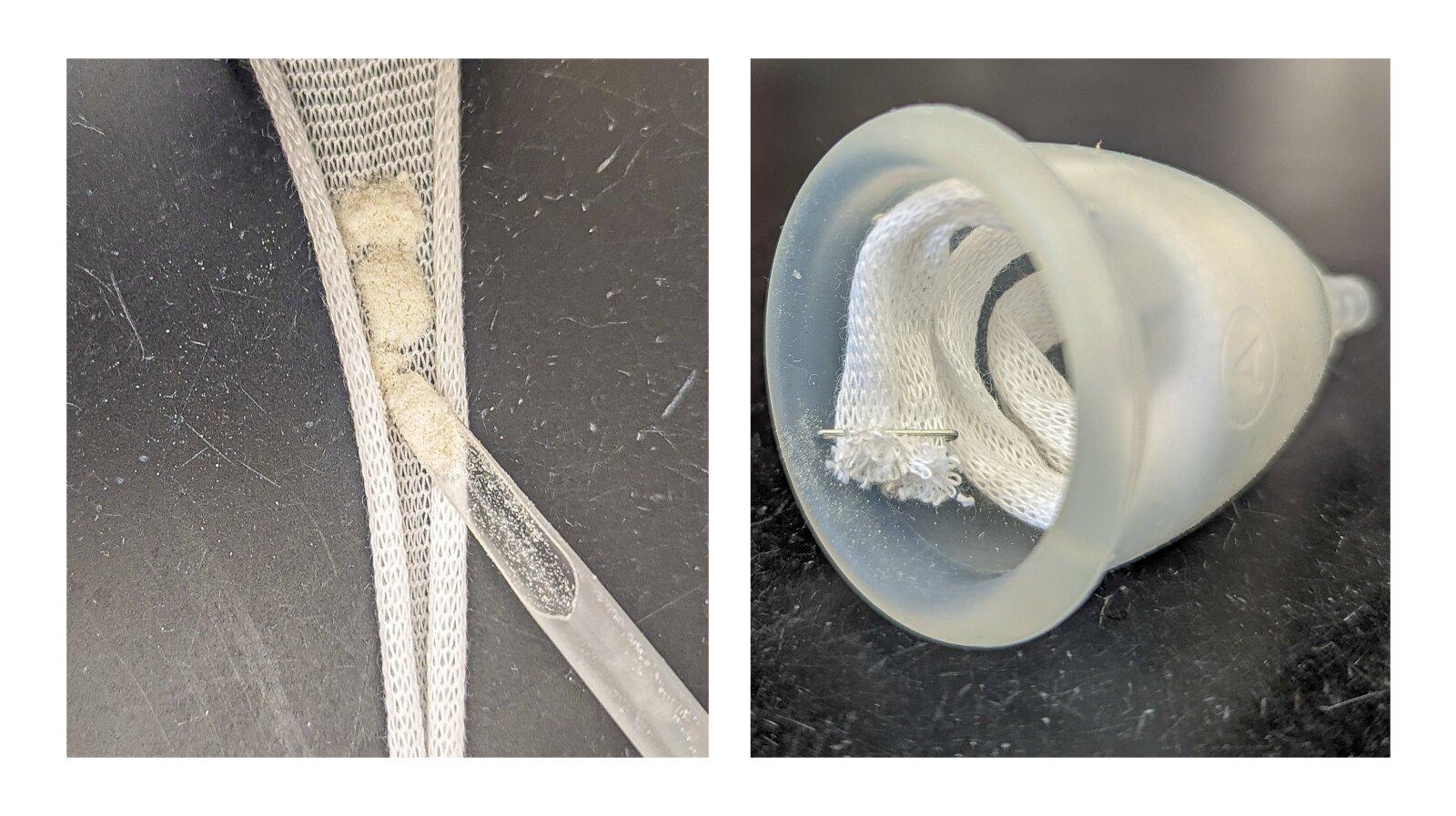In the United States, a young mother spent four days in intensive care in January after contracting a life-threatening blood infection from a tampon. Toxic shock syndrome affects one in 100,000 women.

It’s the kind of story that sends shivers down the spine of all women. In January, Greta Zarate, a 32-year-old American from Jacksonville, North Carolina (USA), contracted a life-threatening blood infection from a tampon and had to spend four days in intensive care before finally being off the hook. the DailyMail reported his story on October 8. This menstrual staphylococcal toxic shock syndrome, better known as toxic shock, affects one in 100,000 women and can be fatal.
On January 31, Greta has her period. The young woman, mother of five children, then began to experience flu-like symptoms. She spends three days in bed, treating herself “with accessible drugs” without a prescription, she says. But his temperature continuing to rise and his blood pressure to drop, his sister, a nurse, encouraged him to go to the emergency room.
Once in the hospital, the American passes a battery of tests, scanners and radios. In vain. The doctors do not understand the origin of his illness. “I was scared and extremely sick. I had serious pain in my side because my spleen was swollen as I was trying to fight off the infection,” she said.
“I suffered from all the symptoms of CTSM”
Fortunately, after learning that the patient was menstruating, a nurse came to suspect menstrual staphylococcal toxic shock syndrome (CTSM). Greta then performs gynecological analyses. The results are clear: the nurse is right, it is indeed a tampon at the origin of the patient’s symptoms.
Once diagnosed, Greta receives a blood transfusion to boost her red blood cells, antibiotics to fight the infection, and morphine to ease her pain. She then spent four days in intensive care and then a week in hospital before being able to return home.
“I suffered from all the symptoms of CTSM but mistook them for the flu – nausea and diarrhea, dizziness, muscle aches. The only thing I didn’t get was a rash which is often a symptom. But I was getting sicker and sicker. My fever was so high that I was trembling and weak,” she says, now fully recovered.
Change your tampon regularly
“I know I changed my tampon regularly, so that’s not why I developed toxic shock syndrome,” she explains. Also, according to the doctors, her CTSM was caused by small cuts in her vagina. “When you remove a dry tampon from your body, it actually leaves tiny scratches on your vaginal wall that allow bacteria to enter your bloodstream and that’s what happened to me,” says the one who can not now. no longer use tampons.
And to conclude: “The doctors told me that if I waited one more day, it could have had disastrous consequences. People who have toxic shock syndrome can end up losing limbs or even dying, so I I feel so lucky.”
Indeed, in March 2017 a 16-year-old Canadian high school girl died in her sleep during a school trip following a toxic shock. She had complained of stomach pains the night before and one of her friends had heard her moaning during the night, without really paying attention.
Dangerous toxins
CTSM, which affects about one in 100,000 women, occurs when harmless Staphylococcus aureus or Streptococcus bacteria, which live on the skin, invade the bloodstream and produce dangerous toxins. It can quickly affect several different organs including the liver, lungs and kidneys. Its progression quickly requires emergency care as symptoms include high fever, low blood pressure, vomiting, confusion and seizures.
This condition most often occurs in women who use tampons because the pooling of blood creates the perfect environment for bacteria to grow rapidly. That’s why boxes of tampons come with a deadly infection warning after more than eight hours of inactivity.
“Wearing a tampon for a long time can ‘block’ it in the vagina. Then it multiplies and produces dangerous toxins”, and a potential toxic shock, explained to LCI Dr. Gérard Lina, medical biologist and head of the National Center of Reference for staphylococci from the Hospices Civils de Lyon.
Organic tampons and menstrual cups would not protect better against toxic shock
The researcher notably participated in a study that menstrual cups or organic tampons do not protect against toxic shock syndrome better than other feminine protections. “Our results do not support the hypothesis that tampons made exclusively from organic cotton may be inherently safer than those made from a cotton-rayon blend.”
“We have observed that the space between the fibers which contributes to the supply of air in the vagina also represents the major site of growth of staphylococcus aureus (bacteria causing toxic shock, editor’s note). In short, the Staphylococcus aureus growth is greater in tampons whose material has been destructured during manufacture than in unmodified tampons.
As for menstrual cups, very fashionable lately, researchers have even observed a greater growth of staphylococcus aureus and a higher production of toxins than in tampons. Possibly due to the extra air introduced into the vagina by this type of protection. In such conditions, sanitary napkins seem to be a good alternative…
.

















